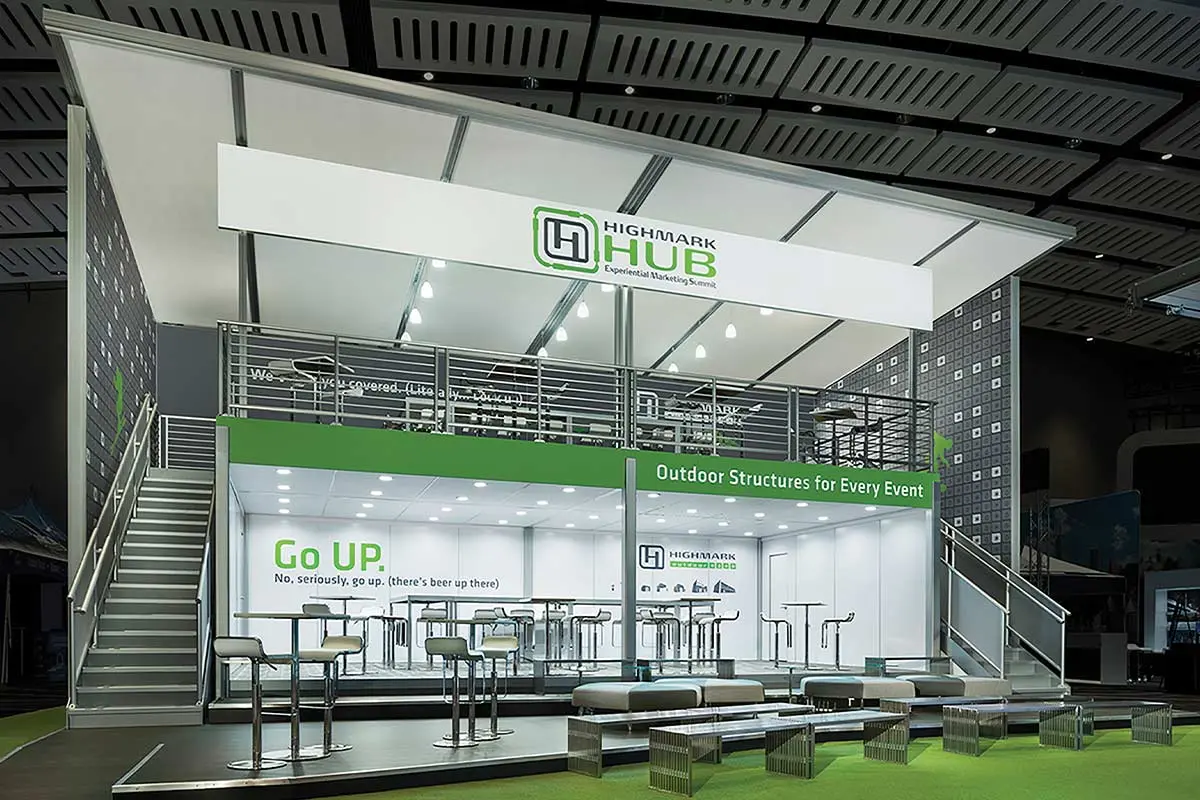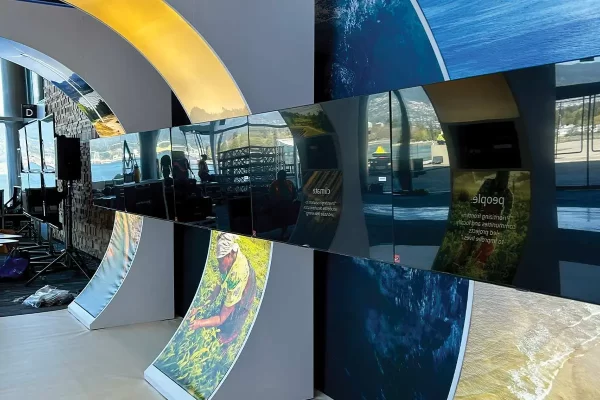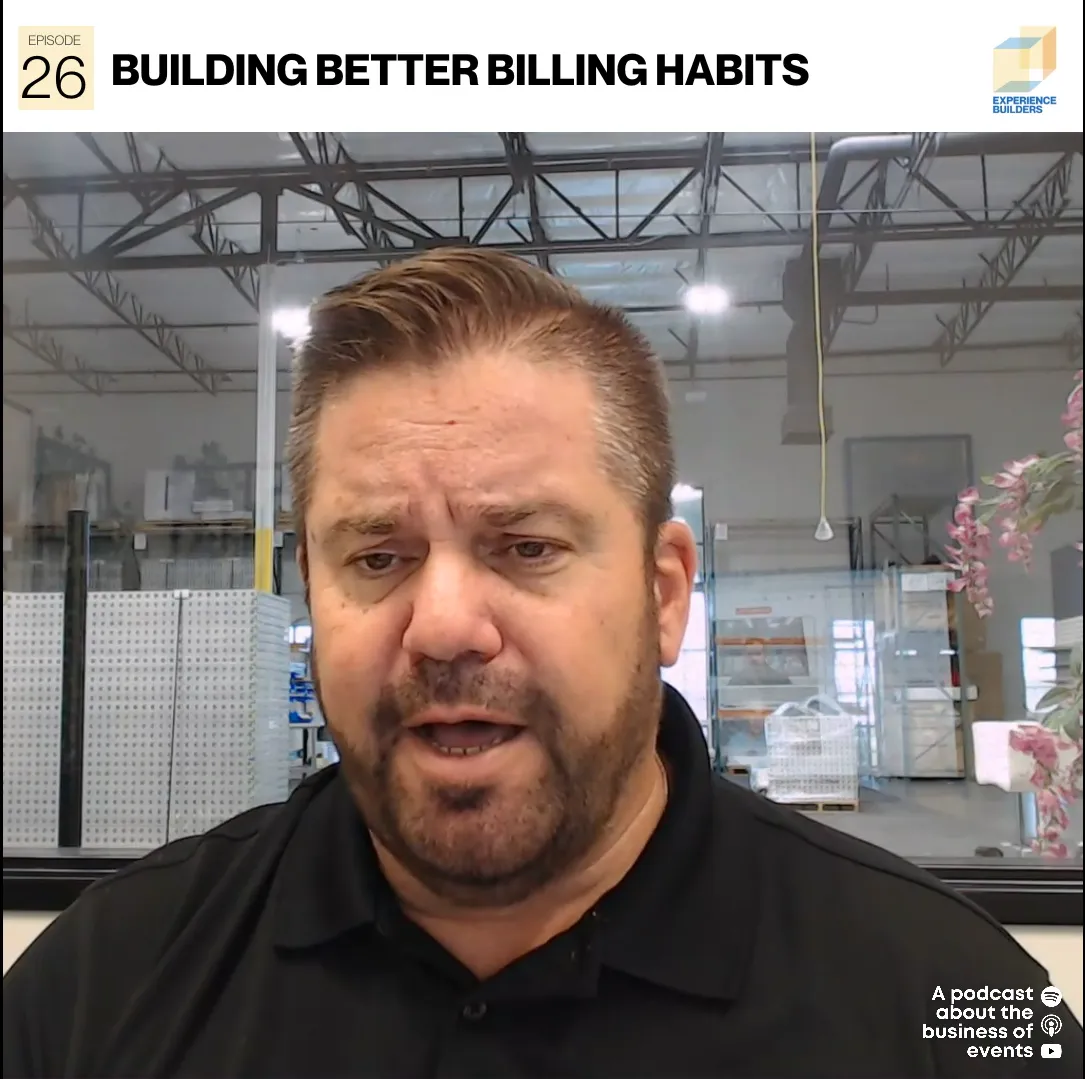What Goes into Good Graphic Design with Insights from Brian Baker
Brian Baker, VP of Creative at Highmark TechSystems and YOURspace Inc., has spent decades leading the process involved in exhibit and event graphics.
“It needs to be a very intentional process,” he says. “The whole purpose of graphics is to facilitate face-to-face interaction. Exhibit graphics aren’t meant to tell the whole story—people do that! And bear in mind: there is a big difference between event graphics and print or digital graphics.”
Brian explains this and more:
Print and digital graphic design assets must tell the story because no personal interaction is possible. There is (or should) be a CTA (a call to action) as part of the design. But again, this is a far cry from human interaction. As designers, we often have hard conversations with agencies when we tell them that the graphics they created for print and digital media might not—for so many reasons—work in a face-to-face environment.
What do I mean when I say that there needs to be an intentional process?
First, like every marketing initiative, we must establish objectives which are in alignment with our overall strategy and narrative. You’ve heard it said that objectives need to be S.M.A.R.T.: Specific, Measurable, Actionable, Relevant, and Time-bound. Many people skip establishing objectives for graphics, yet this is the most important part of the process.
Second, the designer and the customer must agree on the scope. Event graphics can either enable interaction or interfere with it. Going back to number one, clarity about objectives helps define the focus and the scope. Event graphics don’t tell the story; they attract attendees to the space and motivate them to talk to the people staffing the environment.
Third, both parties must agree on a timeline. This gives rise to several scenarios: if the event graphics designer is coming up with the graphics content and images, then input from the customer must come as soon as possible upon the project’s launch. Depending on the brand, the designer needs access to as many relevant assets as possible: TV advertising, promotional activity, print and digital ads, and social media, for starters. The challenge for event graphics is that they must fit the objectives of the event yet remain consistent with the brand’s other touchpoints. This requires not simply including your favorite images in the event space but also choosing graphics that further the objectives (back to number one).
If, on the other hand, the graphics are being designed by an agency, the sooner the images are available to the event graphics designer, the better. Sometimes, print and digital designers don’t understand the physical scale of event graphics, and their image banks (while they work well for print and digital) often don’t work well in large formats, resulting in additional time and effort spent on finding or creating appropriate content. Again, time is of the essence.
Fourth, trust your designers to deliver the most cost effective budget. Since time is of the essence and going beyond the deadlines for show-ready graphics results in going beyond the stated budget, designers need as much information as possible. This includes other graphic reference material, corporate standards, logos, images, as well as your ideas and constraints. Please don’t make us guess: disclose your budget. Share your thoughts with the designer, but realize designers have experience and insight. Today, many formats and delivery methods for graphics need to be a part of the budget discussion. Your designers will know the most compelling and cost-effective way to achieve your objectives and keep to your budget.
Fifth, schedule regular meetings between the internal customers and design and production teams. Set a day and time that works for everyone and emphasize the importance of communication. Everyone from the top decision maker to the designer needs to be on exactly the same page.
Event Graphics are Here and Now
The conversations that graphics facilitate are very here-and-now; they occur in real-time, and attendees can access information beyond the event. So, make sure your graphics are relevant, and are in perfect alignment with what you are trying to communicate to your audience at the specific event. On the other hand, avoid content that is overly specific to a certain event or temporary messaging because it shortens the useful lifespan of (costly) graphics.
Graphics Are for Conversation, not Just Decoration
Just because there is an empty space on an event structure wall doesn’t mean graphics need to appear in that space. The same applies to a phrase used too often: “graphic opportunity.” With a bit more subtlety, I believe what that means is, “Hey, there’s a space here—let’s put up some graphics.”
Graphics are part of the overall strategy to make the most of the exhibit and event environment and facilitate conversation. Unless graphics do that, there’s a problem, and the event graphics are not functioning correctly.
Others want to tell the whole story about the company or product via graphics. They ask, “How will they [the attendees] know what we do if we don’t tell them [via graphics]?” I answer: “If attendees can read the graphics and learn whatever they can, why do they attend events built around face-to-face communication?” The role of the staff is to have the one-on-one conversations that the graphics spark. Don’t dilute the importance of graphics for helping to meet your objectives.
Lastly, it’s important to consider hierarchy, which plays an important role in absorbing information as someone approaches a space. The highest graphic should be the simplest, and they become more specific as they get closer to the level of the attendees in the space. When planning graphics in an environment, think holistically from top-to-bottom. The typical format for hierarchy is:
- Corporate ID/hero brand (highest level)
- Theme/tagline/positioning statement
- Product group/industry segment
- Product or service/specifics
When it comes to graphics in an environment or event, less really is more. Fewer graphics will draw more attention, and less copy will make them easier to absorb. Remember: it’s all about face-to-face interactions. Graphics are meant to help enable those conversations in the event environment.
This story originally appeared in the Q4 2024 issue of Exhibit City News, p. 70. For original layout, visit https://issuu.com/exhibitcitynews/docs/ecn_q4_2024/70.
























